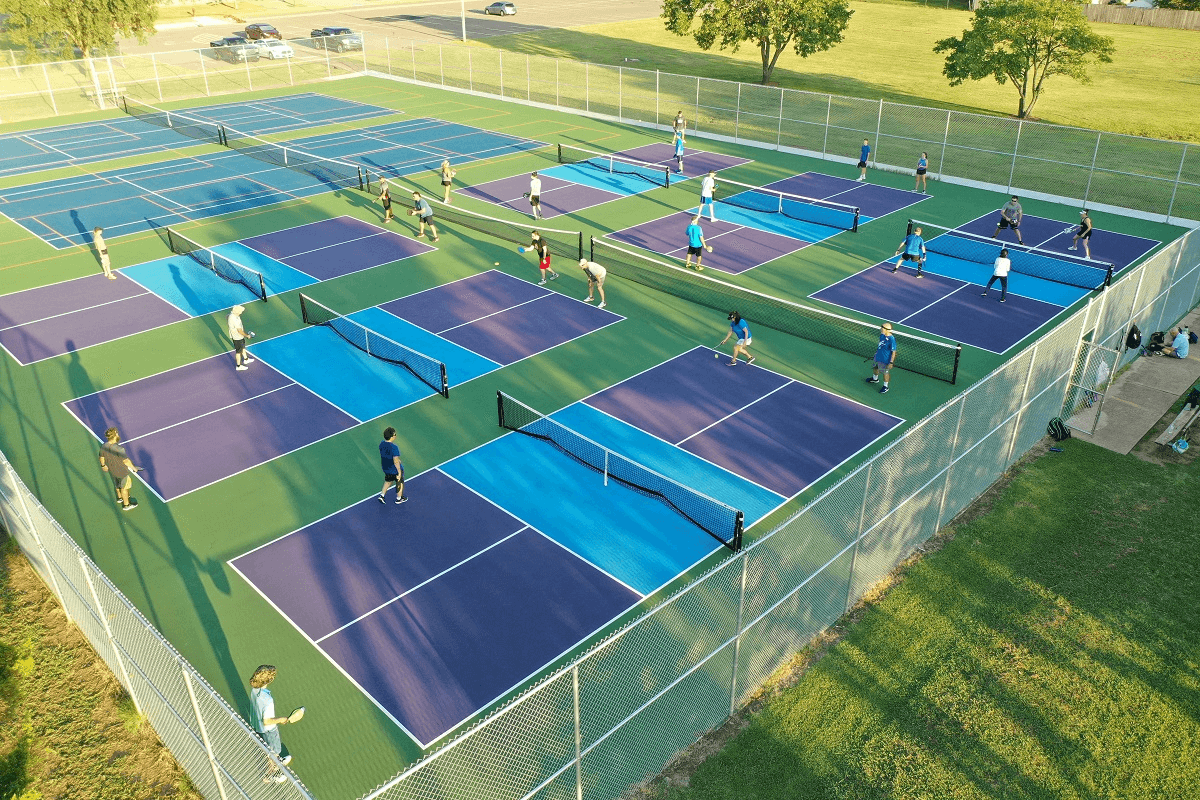Key Consider the Building of Pickleball Courts: From Website Selection to Last Finishes
The building and construction of pickleball courts includes a range of important elements, starting with the choice of an ideal site that stabilizes ease of access with ecological considerations. Crucial elements such as court measurements, surface materials, and water drainage systems considerably influence not only the high quality of play yet likewise the long life of the facility. Attention to illumination and ending up touches can elevate the general experience for gamers and viewers alike. Understanding exactly how each of these parts interrelates might reveal insights that are commonly overlooked, triggering a better exam of best practices in court building.
Site Selection Criteria
When embarking on the building of pickleball courts, it is necessary to nail down the site selection criteria that will ensure optimal playability and accessibility. The area has to be quickly reachable for players, preferably positioned near houses or recreation center, to encourage participation.
In addition, the surface must be level and stable, as irregular ground can bring about security risks and affect gameplay. Adequate water drainage is likewise vital; selecting a website with excellent water overflow will aid preserve court conditions throughout negative weather condition.
One more important factor to consider is the schedule of utilities. Accessibility to electrical power and water is required for lights and upkeep purposes. In addition, distance to car parking centers is necessary, helping with very easy gain access to for players and spectators alike.
Environmental aspects can not be overlooked; all-natural shade from trees can improve player comfort, while direct exposure to prevailing winds might disrupt play. Last but not least, zoning policies and area support need to be thought about to ensure that the job straightens with local standards and receives the backing it requires for effective application. By thoroughly reviewing these criteria, stakeholders can produce a welcoming and useful environment for pickleball enthusiasts.
Court Dimensions and Format
To make sure ideal gameplay and adherence to guidelines, the measurements and format of pickleball courts have to be carefully defined. A standard pickleball court measures 20 feet in width and 44 feet in length for both songs and increases play.
The web elevation is established at 36 inches at the sidelines and 34 inches at the facility, developing a minor dip that impacts sphere trajectory. Court markings are similarly essential; lines ought to be 2 inches broad and unique in color to ensure visibility.
Furthermore, a barrier area surrounding the court is recommended, generally extending 5 to 10 feet past the sidelines and standards to fit players' movements and boost security. Appropriate layout and measurements not only ensure conformity with main policies but additionally improve the overall having fun experience, fitting both recreational and affordable play. Cautious planning in these locations is vital to the successful construction of pickleball courts.
Surface Area Material Options
Picking the right surface material for pickleball courts is critical for making sure optimal gamer performance and safety. The choice of surface can significantly influence gameplay, consisting of ball bounce, grip, and player convenience.
There are several alternatives available, each with its distinctive qualities. Asphalt is a popular option as you could try these out a result of its toughness and low upkeep requirements. It supplies a strong playing surface area that can withstand different weather yet may need periodic resurfacing.
Concrete is one more extensively used material, supplying why not look here outstanding durability and a smooth coating. It allows for constant round bounce but can be difficult on gamers' joints, making it less desirable for long-lasting play without correct cushioning.
For those seeking boosted convenience and shock absorption, cushioned acrylic surfaces provide a sensible alternative. These surfaces integrate a base layer with an acrylic overcoat, giving improved traction and a softer feel, which is helpful for lowering the risk of injuries.
Finally, synthetic grass is obtaining grip, particularly for multi-purpose centers. Its convenience and reduced upkeep requires make it an attractive option, though it may not offer the exact same sphere action as typical tough courts. Mindful factor to consider of these options will guarantee an optimal playing environment.
Drainage and Lighting Considerations
Proper water drainage and reliable illumination are important parts in the building and construction of pickleball courts, substantially influencing both playability and safety and security. Appropriate drainage systems protect against water build-up, which can lead to slippery surface areas and damage to the court framework.
Illumination is just as vital, particularly for courts intended for night usage. Appropriate illumination improves visibility, continue reading this ensuring that gamers can see the round clearly and lowering the risk of accidents. The placement of lights components should be tactically prepared to get rid of darkness and offer even distribution of light across the court. LED lights are recommended for their power performance and long life, supplying bright illumination while minimizing functional prices.

Final Coatings and Maintenance
After addressing water drainage and lights factors to consider, interest turns to the last surfaces and ongoing maintenance of pickleball courts. Usual choices consist of acrylic finishes and specialized sports surfaces that give ideal traction and padding.

Seasonal maintenance may include resurfacing every few years, relying on usage and environmental variables. Properly preserving webs, court lines, and surrounding areas is just as important to supply a secure and pleasurable having fun experience. By purchasing quality surfaces and sticking to an organized maintenance schedule, facility proprietors can guarantee their pickleball courts remain in outstanding problem for several years to come.
Conclusion
In conclusion, the successful building of pickleball courts hinges on thorough interest to several key variables. High quality finishes and a durable upkeep schedule are essential for maintaining the court's condition, enhancing the total experience for players and viewers alike.